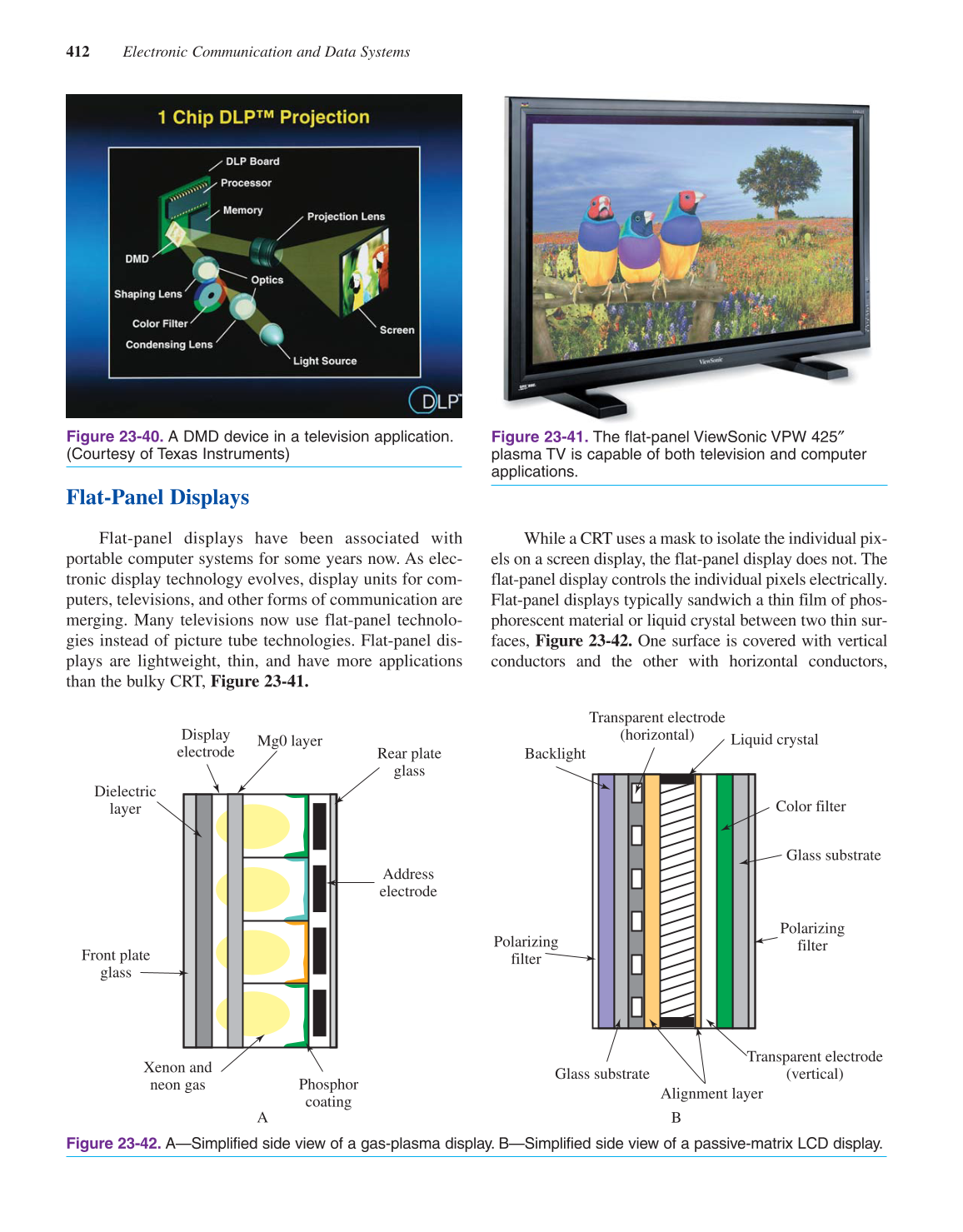Flat-Panel Displays
Flat-panel displays have been associated with
portable computer systems for some years now. As elec-
tronic display technology evolves, display units for com-
puters, televisions, and other forms of communication are
merging. Many televisions now use flat-panel technolo-
gies instead of picture tube technologies. Flat-panel dis-
plays are lightweight, thin, and have more applications
than the bulky CRT, Figure 23-41.
While a CRT uses a mask to isolate the individual pix-
els on a screen display, the flat-panel display does not. The
flat-panel display controls the individual pixels electrically.
Flat-panel displays typically sandwich a thin film of phos-
phorescent material or liquid crystal between two thin sur-
faces, Figure 23-42. One surface is covered with vertical
conductors and the other with horizontal conductors,
412 Electronic Communication and Data Systems
Display
electrode
Mg0 layer
Dielectric
layer
Front plate
glass
Xenon and
neon gas
Rear plate
glass
Address
electrode
Phosphor
coating
A
Backlight
Polarizing
filter
B
Glass substrate
Alignment layer
Transparent electrode
(vertical)
Polarizing
filter
Glass substrate
Color filter
Liquid crystal
Transparent electrode
(horizontal)
Figure 23-42. A—Simplified side view of a gas-plasma display. B—Simplified side view of a passive-matrix LCD display.
Figure 23-41. The flat-panel ViewSonic VPW 425″
plasma TV is capable of both television and computer
applications.
Figure 23-40. A DMD device in a television application.
(Courtesy of Texas Instruments)
